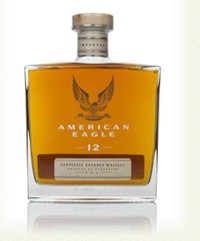In the High Court case of Sazerac Brands, LLC & Ors v Liverpool Gin Distillery Limited & Ors [2020] EWHC 2424 (Ch), conducted under the Shorter Trial Scheme, the Defendants’ use of its AMERICAN EAGLE sign was found to have infringed the Claimants’ registered rights in its mark, EAGLE RARE. The First Defendant’s UK trade mark registration was also declared invalid.


Sazerac Company has been producing a high-quality, award-winning Kentucky bourbon since 2001, marketing a 10-year old and a 17-year old version under the brand, EAGLE RARE. It owns UK and EU registrations covering this mark for whiskey and bourbon whiskey in class 33. As a premium brand, sales of EAGLE RARE are comparatively low when compared against more mainstream brands such as JACK DANIELS. This is not a reflection of demand; more that there is a limit to the amount of EAGLE RARE produced each year.
The Defendants launched AMERICAN EAGLE in February 2019. It is sold in a 4-year old version, marketed towards the lower end of the market, and an 8-year old and 12-year old version, considered more likely to compete with EAGLE RARE.
Mr Hainsworth, CEO of the Halewood Group that the Defendants make up, was considered by Mr Justice Fancourt to be “by nature innovative and an opportunist when it comes to branding of goods”. A previous example given, was Mr Hainsworth’s unsuccessful attempt to register the mark, VERA LYNN, for alcoholic beverages.
Mr Hainsworth claimed he had landed on the name, AMERCIAN EAGLE, when he came across the clothing store, “American Eagle” whilst on business in Thailand. He was, however, well-aware of the Claimants and their EAGLE RARE product at the time, having had past dealings with them in relation to an application for the mark, SKIBBEREEN EAGLE, which ended in a settlement.
The Claimants alleged infringement of their EAGLE RARE trade marks under Articles 9(2)(b) and 9(2)(c) of the Regulation, and equivalent provisions of the Trade Marks Act 1994.
Fancourt held that given the greater degree of brand loyalty within the bourbon market, the average consumer would have a “somewhat higher degree of attentiveness than a consumer of other spirits”, although would not necessarily be the drinker of the bottle they were buying, but could be purchasing it as a gift.
Applying this test, on a comparison of the marks, the EAGLE element of both marks was considered to be the more distinctive component. Overall, the marks were held to have a “significant degree of similarity”, being visually and aurally similar, but conceptually different, with AMERICAN EAGLE calling to mind a bald eagle.
The Defendants were using the sign in the UK and EU bourbon whiskey market, so the same market as that covered by the EAGLE RARE registrations. Despite this, it was held that the average consumer would not be directly confused between the two brands, on the basis of “the strength and image of the name American Eagle”, and the conceptual differences between the marks.
Fancourt did, however, find indirect confusion – that the consumer will understand that the marks are different, but assume an economic connection between them. It was key to this finding that it is common within the industry for brands to launch related products and that the EAGLE element of both marks was unusual and highly distinctive. The Claimants, therefore, succeeded in their Art. 9(2)(b) claim.
Going on to consider the Art.9(2)(c) claim, whilst Fancourt held that EAGLE RARE had a reputation, surprisingly, despite a finding of indirect confusion, he did not consider that the Defendants had taken unfair advantage of that reputation. He did, however, find that there would be detriment to the distinctive character of the Claimants’ EAGLE RARE mark, such that the Claimants would succeed in their Art.9(2)(c) claim also.
This case serves as a useful reminder of the dangers of not carrying out proper clearance searches when developing a new brand and the importance of conducting these prior to investing and launching under that brand. It also highlights the strength that a trade mark registration has when it contains a very distinctive element.
_____________________________
To make sure you do not miss out on regular updates from the Kluwer Trademark Blog, please subscribe here.



Thank you for this summary. So is there any final outcome? Should by the American Eagle renamed? Or this is still unclear and some further steps will be taken…? I am little bit confused right now. Thank you